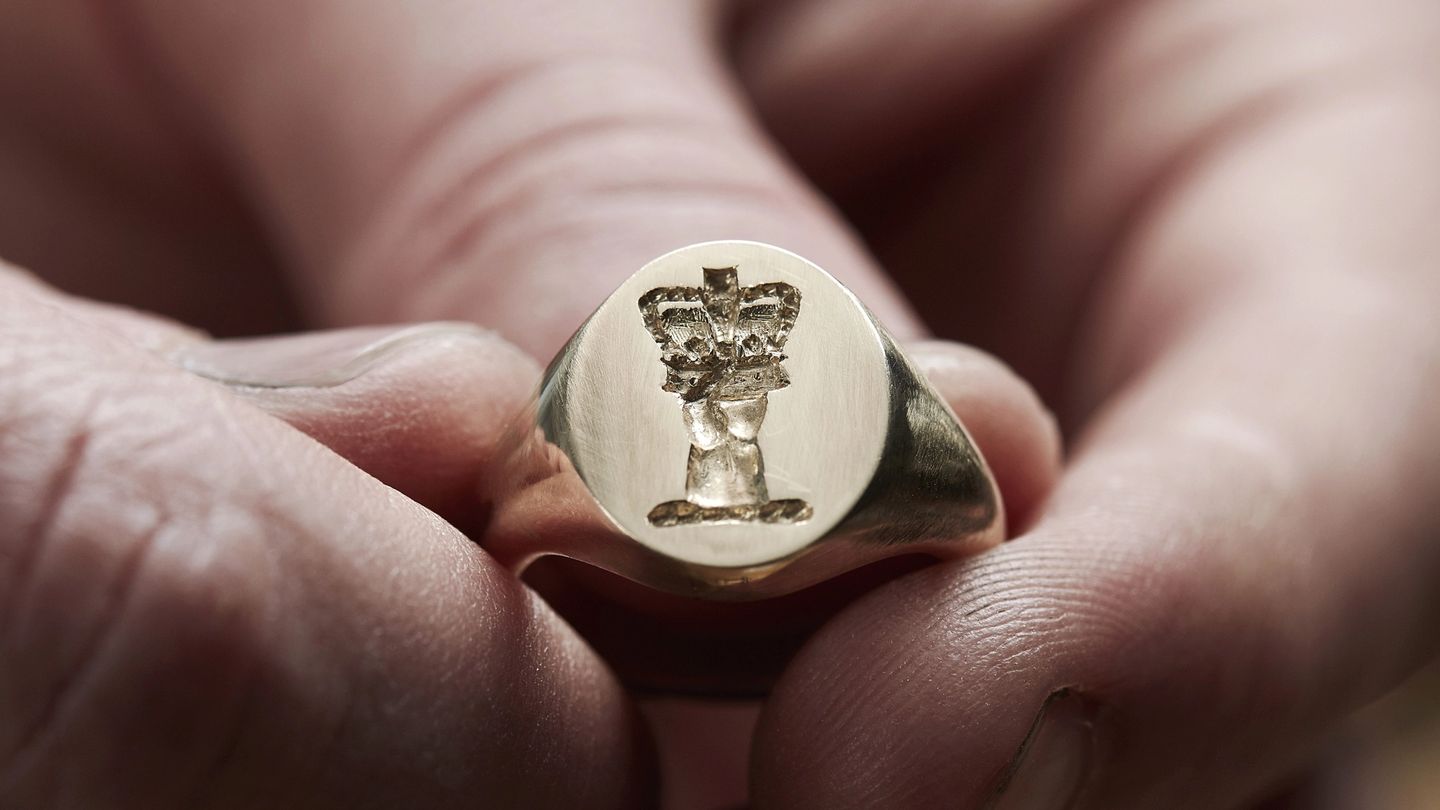

Why Every Man Needs a Signet Ring
Every man needs a signet ring for what it represents rather than what it displays. It speaks of lineage, intention and the quiet assurance that true identity requires no announcement.
- Words: Rupert Taylor
There are few things a modern man can wear that do not make him look as if he is trying too hard. Watches boast, bracelets confuse, and chains, unless you are a Sicilian aristocrat or a retired footballer, should generally remain theoretical. But a signet ring, worn properly, does not shout. It murmurs. It is the most subtle form of male decoration, a small circle of authority resting on the smallest finger. It says, without any need for elaboration, that you understand both restraint and heritage.
The signet ring is not jewellery in the vulgar sense of the word. It is an emblem. A declaration of belonging that transcends fashion and survives generations. To own one is to admit, quite pleasantly, that you intend to take yourself seriously. And that, in this age of synthetics and slogans, is rather refreshing.
A History of Authority and Wax
In ancient days, men with authority needed a way to confirm it without conversation. The signet ring was the solution. It bore a crest or symbol unique to the wearer, pressed into warm wax to authenticate letters and contracts. The ring was both signature and statement, allowing noblemen to agree to treaties, conduct affairs, and threaten rivals without leaving their chairs.
Pharaohs wore them to rule, Roman senators wore them to gloat, and medieval barons wore them to remind peasants who was in charge. The size of the ring often reflected the size of the ego. By the Renaissance, every gentleman with ambition and a sense of theatre owned one.
Today the wax has vanished, but the gesture remains. The ring still speaks when its wearer prefers not to.
The Power of the Pinky
Tradition dictates that a signet ring belongs on the smallest finger of the left hand. That placement is deliberate. The pinky is the finger of intent, the subtle one, the one that does not participate in labour but insists on supervising it.
The British wear their rings there to suggest heritage. The Italians wear theirs there to suggest influence. The Sicilian variety wear theirs there to suggest that lunch bills are paid without receipts. The difference lies only in accent.
The pinky also happens to be the most dramatic finger when lifted around a glass. It moves independently, aristocratically, faintly ridiculous and yet always effective. The pinky ring has long been the calling card of the stylishly dangerous, from ancient dukes to modern dons. The lesson is simple. If you must signal power, let it sparkle quietly.
The Matter of the Crest
A proper signet ring carries a coat of arms. Lions, swords, and Latin mottos were once engraved to immortalise noble deeds, real or otherwise. It was a way of saying,
“My ancestors did something remarkable before the invention of taxes.”
Of course, most modern men have no such inheritance, which is no obstacle. One may simply invent a crest. A quill for charm, a fox for cunning, a martini glass for diplomacy. The motto can be equally personal. Something like Vive Memor Leti if you wish to sound philosophical, or Nil Desperandum if you enjoy resilience, or perhaps Semper Bibens if you tell the truth after the third drink.
No one reads Latin anymore, which is why it remains so useful. Anything looks noble when it cannot be translated.
Choosing the Correct Ring
The best rings are gold, though a confident man may choose silver. Gold softens with age, gathering the fine scratches that make it human. Silver suits the quieter character, the kind who values understatement above warmth. Platinum is unnecessary, unless one is planning to live forever.
The face of the ring should be smooth and rectangular or oval, not large enough to dazzle and not small enough to look timid. It should rest naturally, as if born there. The engraving must be shallow, elegant, and preferably reversed so that it prints correctly in wax, should you ever have the occasion to behave like a Renaissance cardinal.
Avoid stones, avoid sparkle, avoid designs that hint at insecurity. A signet ring is not a billboard. It is a secret whispered in metal.
How to Wear It
The correct way to wear a signet ring is without comment. One never announces a ring. It should appear as naturally as an accent or a reputation.
Allow it to reveal itself through movement. Let it catch the light as you raise a glass. Let it rest casually on the table during conversation. If someone remarks upon it, never look flattered. Smile as though you cannot quite remember where it came from. Say, “Old family thing.”
This is acceptable whether your family crest features lions or lawnmowers.
Never remove it unless you are boxing or performing surgery. A signet ring belongs on the hand, not in the drawer. It gains character with age. Every faint scratch records a story you no longer need to tell.
The Company It Keeps
Throughout history, the signet ring has been worn by kings, cardinals, explorers, and men who prefer to be taken seriously before they open their mouths. It has also been worn by the mafia.
The connection is not accidental. Both professions rely on influence, discretion, and well-tailored suits. The difference lies in geography and income tax. Yet there is something undeniably attractive about a ring that looks equally at home in Mayfair and in Palermo. One implies nobility, the other suggests danger. Both are terribly useful in conversation.
Even the pinky ring of the Italian kind carries charm when worn with confidence. It says you are either a man of tradition or a man of trouble, and that either option sounds far more interesting than accounting.
Why Every Man Should Have One
A man’s wardrobe needs one element that serves no purpose but pleasure. The signet ring is that element. It does not measure time or fasten fabric. It simply exists to remind you that style once mattered enough to be engraved.
It is also democratic. You need not be noble to wear one. You simply need the nerve. The first time you see it glint against your cuff, you will understand that history is less about bloodlines and more about confidence.
In an age where men announce themselves by phone and password, there is something wonderfully unnecessary about a symbol you cannot swipe.
The Gentleman’s Epilogue
A man who wears a signet ring knows who he is even when the world forgets to ask. The ring carries dignity, humour, and a faint whiff of danger, which is precisely the recipe for charm.
So buy one, or inherit one, or invent one. Engrave it with whatever crest pleases you. Lift your glass, shake your hand, and allow the light to find it. If anyone asks, tell them the family has had it for centuries.
They will not believe you, of course, but they will admire you for saying it with such calm authority. And that, in the end, is exactly what the ring is for.
Further reading


The Country Gear Guide

